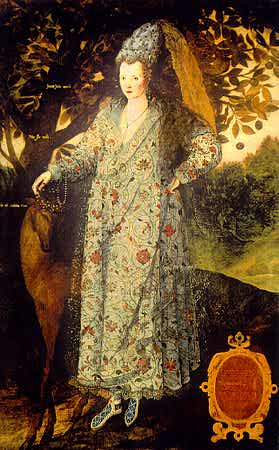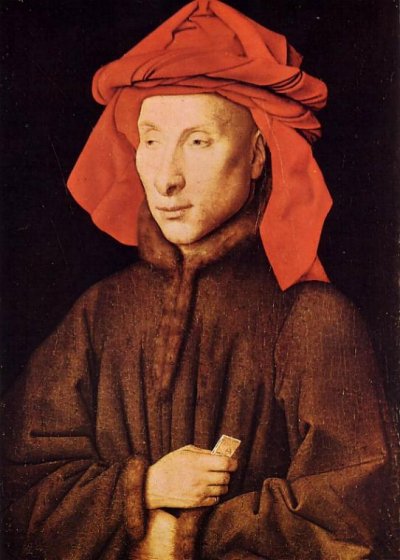I believe (from what I remember from my art history classes) that it was Giovanni Arnolfini himself who commissioned the painting to commenorate/validate his marriage. In the back wall, it's written "Jan Van Eyck was here," so not only did the artist produce a painting, he also acted as a necessary witness to the marriage ceremony. He paints his self portrait reflected in the mirror.
I don't know if you've read or watched Girl with a Pearl Earring, the story behind another famous Dutch painting, but Vermeer's bedroom was also the house's hall where the dinner parties took place (you can see their bed in the backround). That might be the same case w/ the Giovanni Arnolfini Marriage. Also, there's some symbolism in that the husband is standing by the window, the outside world where he makes his living as a merchant/banker, and the wife is standing by the bed as her place is in the house. Van Eyck also did a portrait of Arnolfini.
That's what I know about the painting...very interesting subject. Now if you were refering to who commissioned the Elizabeth I "pregnant" painting, don't know much about it.




